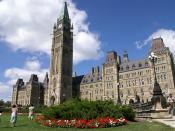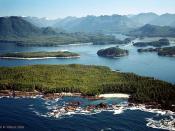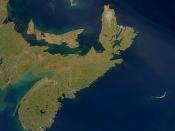Economic Development is a term generally applied to the sustained expansion of a region's wealth, which translates into increased quality of life and well-being of its inhabitants. Looking at the change from 2002 to 2006, we notice that the real GDP per capita of the Atlantic region rose by 7%, while Canada's Real GDP per capita rose by an astonishing 10% (GEOG 1410, Table 2). In other words, relative to the rest of Canada, the Atlantic region's productivity growth is slow.
Located on the east cost of Canada, the Atlantic region is comprised of four provinces; Newfoundland and Labrador, Prince Edward Island, Nova Scotia and New Brunswick. Surrounded with many bodies of water namely the Atlantic Ocean, and the Gulf of the St. Lawrence, the natural resources that are predominately found in this area of the country are fisheries, mining and forestry. Aquaculture has been on the rise in that part of the country because of the government quota on cod fishery (Encarta Online Encyclopedia, Nova Scotia).
Mining for oil, metal ores and minerals is important for the region which has great presence of coal, silver and copper. Containing both coniferous and mixed forests, the forestry industry plays a major role to providing raw material to the wood products industry such as producing pulp and paper (Bruce, Atlantic Canada: a Region on the Rise). In terms of human potential, the Atlantic labour force is young and skilled with approximately 70% of its total population in their working ages i.e. between the ages of 15 to 64 (Statistics Canada, Population by Sex and Age Group).
Early in the 19th century, riche were made in the fisheries, forests and maritime industry. By the mid-19th century, lumber preferences ended and, in shipping, iron and steam began to dominate the economic structure. Halifax was...



This was an informative essay
This was well sourced and informative, and a good essay overall...well done!1
1 out of 1 people found this comment useful.